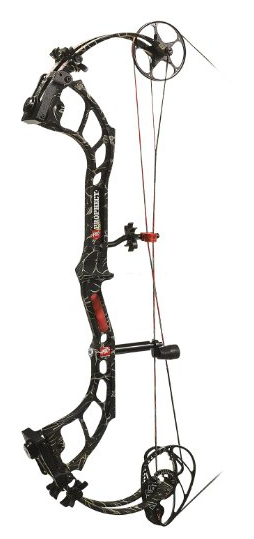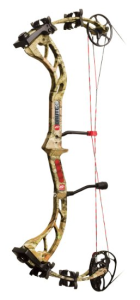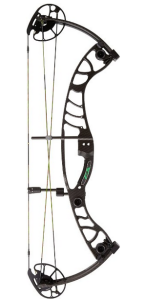Whether you like to practice your archery skills on the range or you use your bow and arrow to hunt live prey, you will want to take advantage of the tools and equipment that make it possible for you to make an excellent shot. Making sure you take your best shot is important, particularly when you are hunting, as you want to make every effort to have a clean kill: One that will prevent the animal’s unnecessary suffering. You also want to try to prevent any damage from occurring to your equipment, whether you are practicing or you are actually on a real hunt. It is impossible to simply pull back the bowstring and expect to hit your intended target with any degree of accuracy.
Thus, it is vital that you learn how to sight in your bow so you can improve the likelihood of striking the target you have chosen. The process of sighting in your bow allows you to make up the different for arrow drop caused by the gravitational pull over disturbances and distances once the arrow has been fired from the bow. Due to the importance of sighting in your bow to the level of accuracy, you will want to follow the steps provided here to make sure you make the most of every shot.
General Tips for Beginners
In order to sight in your bow correctly, you will want to spend some time each day for a few days to dedicate yourself to sighting in your bow. Over the course of a few days, you will be able to compensate for any issues that might arise due to fatigue, a shift in form of stance, or human error in general. If you span out your time and sight in the bow over the course of a couple of days, it will gain you a greater degree of accuracy with every shot you make in the future.
When you attempt to sight in your bow, make sure your arrows are the same weight and length. Also make sure your practice tips and hunting tips are the same weight. The weight is conveyed in grains. The tips should be at 80 to 100 grain for good performance.
Sights for Your Bow
There are plenty of different styles of bow sights you can choose from when you are looking for the perfect sight to mount to your bow for the purposes of improving your shot. If you are new to archery, you may find cost is your foremost concern and you might do well to focus on seeking out a sight for your bow based on affordability factors. However, many compound bows come equipped with a bow sight when you purchase them.
The easiest sights for you to use are often the most reasonably priced because the less expensive sights have fewer bells and whistles. With the easiest sights to use, you will find the devices fitted with some pins in an array of colors, all of which are set for the distances you determine. The pins are often independent of the other pins so you can adjust one pin without having to tweak or change the others. For the yardage/distance settings, you are left to determine the settings you desire, and you can preset up to three or four distances.
A sight will come equipped with a bracket for mounting the sight to your bow. The sight should be easy enough to mount as it will affix to your equipment with a few screws. You should verify however, that the sight will accommodate both left and right handed archers so you are guaranteed a sight that works no matter what your dominant hand is initially. The sights available on the market today include fixed pin sight, the sight with moveable pins, and the pendulum sight. The one you choose will be based on preference. In terms of sights and installation, there are two distinct forms of mounting brackets: dovetail and fixed, with the permanency of the fixed sight far more appealing than the removable dovetail solutions.
An affordable bow sight is right around $40.00. If you have been into archery for a while and you are looking to participate in tournaments, no doubt you will want to check out the more pricey sights for your bow. Since the most widely used sight is the fixed pin option, this article will focus on sighting in the fixed pin variant of bow sightings. Fixed pin sights are certainly suitable for recreation and hunting pursuits.
Installing the Bow Sight
Once you buy a sight, be sure to read the installation manual that comes with the sight. The sight is part of the bow that is attached to the riser. The sight should come with connections that make it possible to mount the sight to the bow with ease. You may find your bow actually has holes that are predrilled into it where you can attach the bow. When installing the sight, take care not to over tighten the screws during the install as you run the risk of damaging your bow. You will want the pins to line up with the bowstring vertically. The sight is installed at a right angle to your bow. You should let the sight settle for 24 hours before attempting to make adjustments. The next day, be sure to check and see if the unit requires a bit more tightening.
Setting the Sighting Pins
Using an Allen wrench, you can set all of the sight’s pins to mid-point. Taking this step will allow you to make the most of your adjustments in whatever direction you have to make the adjustments. When you are ready, make sure you have a target established. Once the target is all set up, you can mark four distances at 10-yard increments: 10, 20, 30, and 40 yards respectively. If it is necessary for you to do so, you can use a range finder in order to increase the accuracy of the distances you set. You will need a durable target as well, as you will be making several shots into the target repeatedly as you sight in your bow.
Once you buy a sight, be sure to read the installation manual that comes with the sight. The sight is part of the bow that is attached to the riser. The sight should come with connections that make it possible to mount the sight to the bow with ease. You may find your bow actually has holes that are predrilled into it where you can attach the bow. When installing the sight, take care not to over tighten the screws during the install as you run the risk of damaging your bow. You will want the pins to line up with the bowstring vertically. The sight is installed at a right angle to your bow. You should let the sight settle for 24 hours before attempting to make adjustments. The next day, be sure to check and see if the unit requires a bit more tightening.
Setting the Sighting Pins
Using an Allen wrench, you can set all of the sight’s pins to mid-point. Taking this step will allow you to make the most of your adjustments in whatever direction you have to make the adjustments. When you are ready, make sure you have a target established. Once the target is all set up, you can mark four distances at 10-yard increments: 10, 20, 30, and 40 yards respectively. If it is necessary for you to do so, you can use a range finder in order to increase the accuracy of the distances you set.
To sight in your bow, you must stand perpendicular to your target at the 10-yard mark and place a practice arrow with a practice tip in your bow. Pull back the bow to full draw. Glance down at the bow sight’s uppermost pin. Release the arrow toward the selected target. Repeat this process a few times. Look at where the arrows are hitting the surface of the target and consider what you see as you prepare to set your sight. After viewing where the arrows are landing, determine how to adjust the sight. For example, if the arrows you shot went just above the area that the pin’s sight, you should adjust the sight box by moving up on the bow. You will have to continue with this process until the bow is not longer firing and hitting the target about the pin in your bow sight. Once you are done with the ten-yard mark, you will step back to the 20-yard mark, and do it all over again, only this time you will focus on the second pin down from the top in your sight. The process is the same for the third and fourth pins in your site.
Sources:
Wiki How’s “How to Sight a Bow In.” Website. URL: http://www.wikihow.com/Sight-a-Bow-In.
ArcheryBuff.com. “How to Sight in Your Bow.” Website. URL: http://www.archerybuff.com/2011/how-to-sight-in-your-bow/.
Shooting Time.com’s “BOW SIGHT – ADJUSTING PINS, 2ND AXIS, AND 3RD AXIS.” Website. URL: https://shootingtime.com/bow-tuning/adjust-bow-sight/.
Petersen’s Bow Hunting’s “Goof-Proof Tips for Sighting-In Your Bow.” Website. URL: http://www.bowhuntingmag.com/tactics/goof-proof-tips-for-sighting-in-your-bow/.
Resources:
Learning Archery Blog. “How to Sight in Bow.” Website. URL: http://learningarchery.com/how-to-sight-in-bow/.
ArcheryReport.com’s “Sighting in Your Bow the Easy Way.” Website. URL: http://archeryreport.com/2011/06/sighting-bow-easy/.
OutdoorLife.com’s “Tune Up A step-by-step guide to assembling an accurate bow.” Website. URL: http://www.outdoorlife.com/node/1005005153.
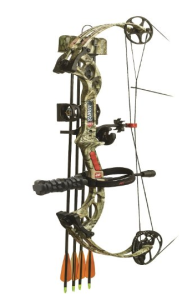 Depending on the model that you purchase, you may or may not have choices when it comes to the finish. Older models were finished with mossy Oak New Break-UP or Mossy Oak Treestand while the newer models coming with Infinity or Skulz Camo. But no matter what finish you get, it’s guaranteed to last the lifetime of the bow, which is quite some time.
Depending on the model that you purchase, you may or may not have choices when it comes to the finish. Older models were finished with mossy Oak New Break-UP or Mossy Oak Treestand while the newer models coming with Infinity or Skulz Camo. But no matter what finish you get, it’s guaranteed to last the lifetime of the bow, which is quite some time.
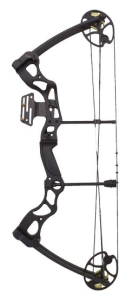
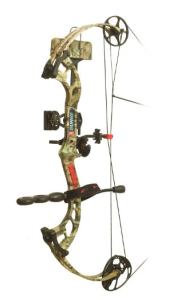 The
The 